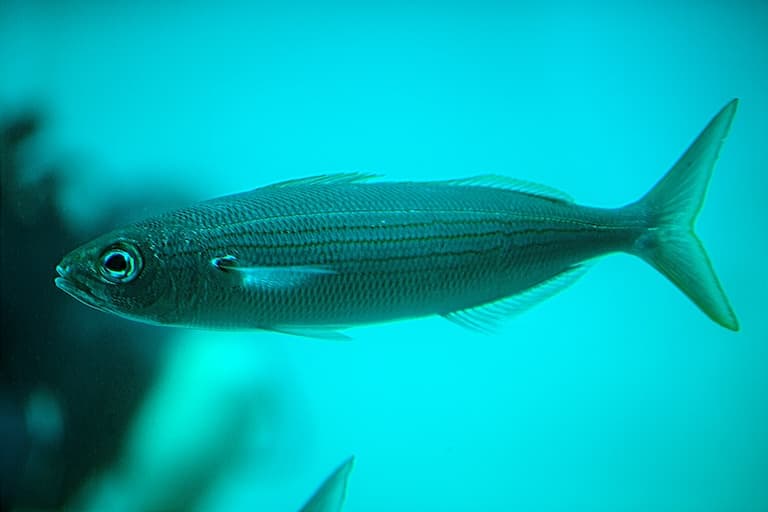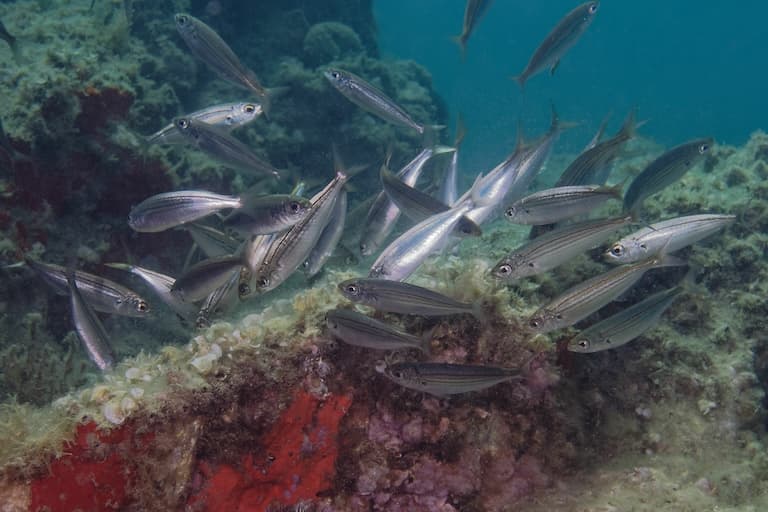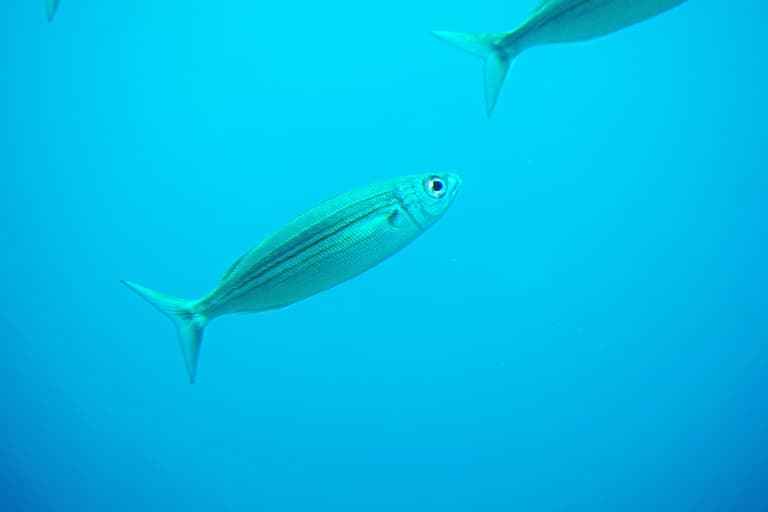Boops Boops Profile
The slightly pompous, but nonetheless well-structured and handy binomial naming system for organisms has always had a weakness when it comes to being able to remember the name of an animal.
Canis lupus sounds more like an autoimmune disease of the tooth, and the overlap between scientists and Tolkien nerds gives us such indecipherables as Gollumjapyx smeagol that should never have made it past the review board.
So, we use common names, like “horse”, and [“pink see-through fantasia”] to make things easier for the layman.
But sometimes the binomial name is just so perfect that we need go no further to describe it, as is the case with Boops boops, some kind of marine animal or something. Great name, though.

Boops Boops Facts Overview
| Habitat: | Coastal and semi-pelagic waters |
| Location: | Eastern Atlantic, Mediterranean, North Sea |
| Lifespan: | At least 11 years |
| Size: | Up to 30 cm (12 in) long |
| Weight: | Up to around 1 kg (2.2 lb) |
| Colour: | Silvery grey |
| Diet: | Seaweed, crustaceans, and some plankton |
| Predators: | Larger bony fish, sharks, humans |
| Top Speed: | Average medium fish speed |
| No. of Species: | 1 |
| Conservation Status: | Least Concern |
Boops boops would never be allowed as a plant name. And that’s fine because it’s a highly prevalent ox-eyed bream with a surprising vocal repertoire.
This species is very common in the Mediterranean and Eastern Atlantic coasts and is eaten quite a lot as a result. This doesn’t seem to have made much of a dent in its population, and the little bream is still doing well (albeit riddled with microplastics, but who isn’t?).
Interesting Boops Boops Facts
1. Bogue
Boops boops is an example of a tautonym, like Gorilla gorilla or Rattus rattus. This naming method can be so entertaining that it’s disallowed from botany entirely for fear that plant people might start enjoying life and abandon the discipline altogether.
The animal-lovers community are not typically very serious and can be almost entirely categorised as either boopers or yoinkers.
Boops boops, quite obviously, appeals to one of these in particular. But for the yoinkers, there are other names for it, too.
Boops is a genus of sea bream, from the family Sparidae, which are some of the most recognisable fishes seen around coastal waters in the Mediterranean, and are some of the most important food fishes in the world.
The name apparently translates to “ox-eyed” from Ancient Greek, and this is clearly a reference to its innocent little face.
This wide-eyed fish is also known as the Bogue, which makes them sound like Star Trek antagonists, but the names get weirder still.

2. They roar?
Aristotle appears to have given the fish the name Box, which, at the time possibly referred to its ability to roar.
At first, this strongly suggests that as far back as Ancient Greece, people knew they could make sounds, but then, Aristotle called the octopus “A stupid creature”, and thought elephants could live for 300 years, so he didn’t get everything right.
Still, Aristotle might have been onto something with the Boops – something it took modern science about 2,500 years to catch up with him on.
3. Fish can boop
For those interested, new discoveries about animal communication are some of the most exciting recent revelations in zoology.
It’s well known that toothed whales are talking to one another, but we’re closer than ever before to figuring out what it is they’re saying.
And recently, animals we previously thought were entirely mute are also raising their voices to levels audible to the scientific community. Freshwater turtles, it turns out, have been talking to one another for 100 million years, and nobody (human) knew.
Marine fish, too, are among the vertebrates whose ability to communicate is finally being recognised by science.
Armed with this knowledge, the team at FishSounds.net have started to put together a database of fish speech, much like xeno-canto.com does for birds. There are currently two recordings of fish under the “Boop” category, though neither is the Boops boops.
But this does mean there’s an avenue of plausibility to the future discovery that Boops boops really does swim around the ocean saying its own name. 1 2

4. It’s found on various bottoms
While we eagerly await this discovery, in the wild, bogue is mostly seen on the coastal shelf in tropical and temperate waters, dabbling about in the mud, sand, rocks or seaweed.
They are primarily bottom-feeders but are sometimes caught in pelagic nets, suggesting that they do venture farther out, as well. This species has a very generalist diet and this might explain why it’s so successful in the face of such declines in other species.
Unfortunately, it also explains why the fish are partly made of plastic now.
5. They’re full of microplastics
When brewing beer, the toxic by-products of fermentation (alcohol) build up in the demijohn and eventually kill all the brainless little yeasts that were producing it because they were too basic to figure out how to stop consuming until it was too late. Microplastics are the human equivalent of this.
Unfortunately, in the human case, these by-products aren’t a refreshingly hoppy mini brew, but (among many other things) a pervasive cloud of nanoparticles that interfere with cellular and hormonal processes, and they’re not contained to a 5L glass tank in a garage – everything else on the planet is exposed to the fallout, too.
Boops boops, as an indiscriminate feeder of most things, ends up eating a lot of the plastic that ends up in the ocean, which is most of it.
They’re so full of plastics that their stomach contents can give researchers clues as to where industrial wastes are ending up, with the fish from more developed coastal areas showing much higher levels than more remote samples do.
Microplastics still may turn out to be a big nothingburger, or they could collapse ecosystems – there hasn’t been enough time to be sure – but regardless, it’s an alarming discovery that even vegetables are full of them now, and for the Boops, it’s only one of many unsavoury things inside it. 3
6. They have a lot of parasites
If an individual is riddled with parasites, it might suggest a weakened organism, but if a species is host to a multitude of parasitic organisms, this can be a sign that it’s a very prevalent and successful species as a whole.
This species is a very common one across its range, feeding on a diverse bounty of organisms from algae to crustaceans, to small pieces of floating toothbrush, and being this adaptable means it’s co-evolved alongside a bunch of freeloaders over the years.
Boops boops are host to a whole bunch of parasitic worms, isopods, cnidarians and smaller, single-celled parasite species.
Interestingly, the Prestige oil spill in 2002 resulted in a lot of these getting significantly reduced. This might sound like a good thing, but they were mostly replaced with polychaete worm parasites that had more of a resilience to the oil. 4

7. They’re doing ok
This fish is described as ubiquitous and common throughout the coastal waters of the Mediterranean Sea and the Eastern Atlantic, and the IUCN lists it not only as Least Concern, but also stable in its populations.
The meat is edible but deteriorates fast, so it’s said to be of little commercial value, and this surely contributes to the stability.
Boops Boops Fact-File Summary
Scientific Classification
| Kingdom: | Animalia |
| Phylum: | Chordata |
| Class: | Actinopterygii |
| Order: | Acanthuriformes |
| Family: | Sparidae |
| Genus: | Boops |
| Species: | boops |
Fact Sources & References
- “A Brief Tour of Fish Sounds”, Fish Sounds.
- (2022), “Turtle Vocalizations Reframe Origins of Auditory Communication”, The Scientist.
- Odei Garcia-Garin (2019), “Boops boops as a bioindicator of microplastic pollution along the Spanish Catalan coast”, Science Direct.
- Pérez-del Olmo (2006), “Parasite communities in Boops boops (L.) (Sparidae) after the Prestige oil-spill: Detectable alterations”, Sci Hub.
